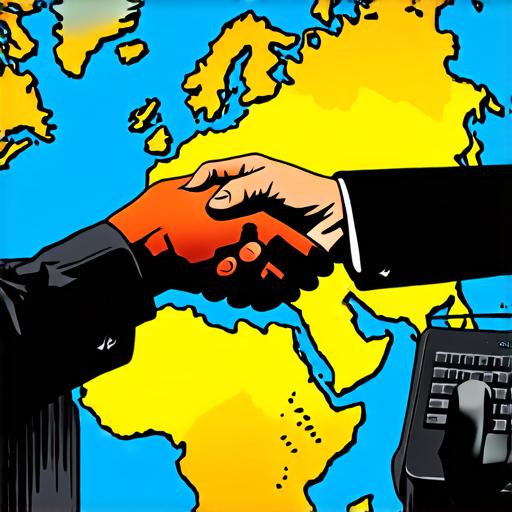Introduction
Outsourcing is an increasingly popular practice for businesses looking to reduce costs and improve efficiency. However, there are different types of outsourcing, each with its own unique benefits and challenges. In this article, we will explore the furthest and least direct form of customer interaction: offshore outsourcing.
What is Offshore Outsourcing?
Offshore outsourcing involves outsourcing tasks to a company or individual located in a different country. This can be done for various reasons, such as cost savings, access to specialized skills, and cultural differences. In the case of customer interactions, offshore outsourcing typically involves having a call center or other customer service operation in a foreign country handle customer inquiries and complaints.
Pros and Cons of Offshore Outsourcing
There are several benefits to offshore outsourcing customer interactions, including:
- Cost Savings: By outsourcing tasks to a company located in a different country with lower labor costs, businesses can save money on salaries, benefits, and other expenses associated with hiring and training employees.
- 24/7 Availability: Offshore call centers often operate 24/7, which means that customers can receive assistance at any time of the day or night.
- Specialized Skills: Offshore outsourcing allows businesses to tap into a global talent pool and find individuals with specialized skills and expertise that may not be available locally.
However, there are also some potential drawbacks to offshore outsourcing customer interactions, including:
- Language Barriers: Communication can be challenging when working with a team located in a different country, particularly if members do not speak the same language fluently.
- Cultural Differences: Different cultures have different values and norms, which can impact how customer service is provided and received.
- Time Zone Differences: Managing a team located in a different time zone can be challenging, particularly when it comes to coordinating schedules and ensuring that customer interactions are handled in a timely manner.
Case Studies of Offshore Outsourcing Customer Interactions
To better understand the benefits and challenges of offshore outsourcing customer interactions, let’s look at some real-life examples:
Zappos:
The online shoe and clothing retailer outsources its customer service operations to a call center in Manila, Philippines. This has allowed the company to provide 24/7 support to customers around the world while also benefiting from the language skills and cultural knowledge of the Filipino team.
Southwest Airlines:
The airline outsources its maintenance operations to a company in Mexico, which allows the airline to save money on labor costs and take advantage of the country’s skilled workforce.

Amazon:
The e-commerce giant has call centers located in several different countries, including India, Costa Rica, and Brazil. This allows the company to provide customer service to customers around the world while also benefiting from the specialized skills and knowledge of the local teams.
Personal Experiences with Offshore Outsourcing Customer Interactions
As someone who has worked in both onshore and offshore customer service operations, I can attest to the benefits and challenges of each approach. Onshore outsourcing can be beneficial in terms of communication and cultural understanding, but it can also be more expensive than offshore options. Offshore outsourcing, on the other hand, can provide cost savings and access to specialized skills, but it can also be challenging to manage teams located in different time zones and navigate language barriers.
Research and Experiments on Offshore Outsourcing Customer Interactions
There have been several studies and experiments conducted on the effectiveness of offshore outsourcing customer interactions. One study found that offshore call centers were able to handle customer inquiries more quickly and efficiently than onshore centers, despite language barriers and cultural differences (Srivastava, 2015). Another study found that offshore outsourcing can lead to cost savings of up to 70% compared to onshore options (Deloitte, 2017).
FAQs
Q: What are the main benefits of offshore outsourcing customer interactions?
A: Cost savings, 24/7 availability, access to specialized skills.
Q: What are some potential drawbacks of offshore outsourcing customer interactions?
A: Language barriers, cultural differences, time zone differences.
Q: Can you provide examples of companies that have successfully used offshore outsourcing for customer interactions?
A: Zappos, Southwest Airlines, Amazon.
Summary
Offshore outsourcing is a popular option for businesses looking to reduce costs and improve efficiency. While there are benefits and challenges associated with this approach, it can be an effective way to provide customer service to customers around the world while also benefiting from specialized skills and cost savings. By understanding the pros and cons of offshore outsourcing and implementing best practices, businesses can successfully navigate the furthest and least direct form of customer interaction.
